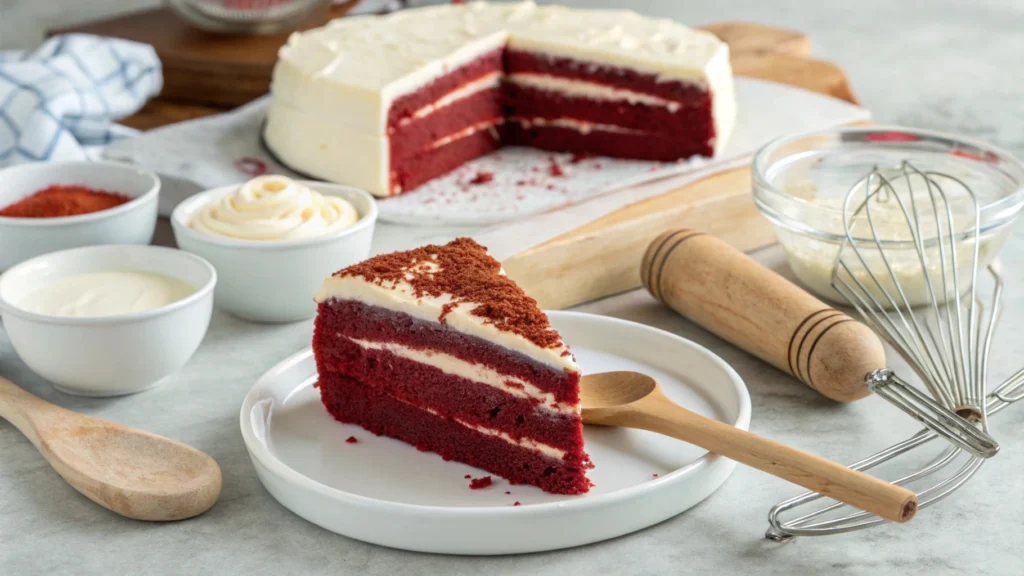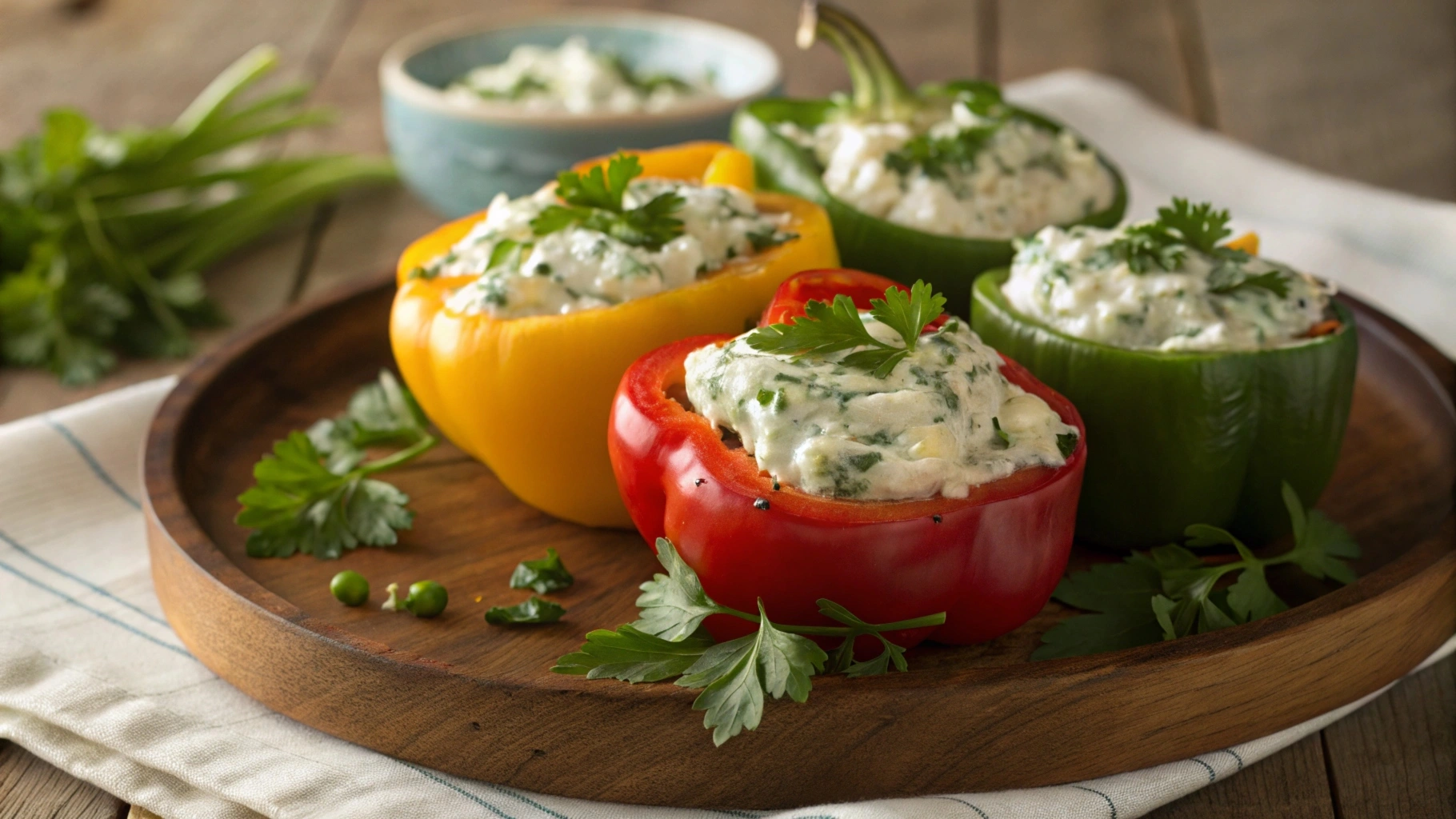is an absolute favorite in the culinary world. Whether you’re crafting a rich cheesecake, frosting a decadent cake, or preparing pastries, this creamy delight adds a luscious touch to every dish. Its tangy yet smooth flavor works beautifully in both sweet and savory recipes, making it a must-have for bakers and cooks alike.
In this guide, we’ll dive into everything about cream cheese filling from its history and uses to tips and versatile recipes. Ready to uncover the secrets to creating the perfect cream cheese filling? Let’s get started!
The Basics of Cream Cheese
What is Cream Cheese?
Cream cheese is a fresh, soft cheese made from milk and cream. Unlike aged cheeses, it is enjoyed in its freshest form, which gives it a smooth texture and mild tangy flavor. This cheese is widely available in blocks or tubs, making it easy to incorporate into any recipe.
[Historical Origins of Cream Cheese]
Cream cheese originated in 19th-century America, thanks to dairyman William Lawrence. While trying to replicate French Neufchâtel cheese, Lawrence accidentally created the first commercial cream cheese. Since then, it has become a kitchen staple worldwide, with brands like Philadelphia leading the way.
Types of Cream Cheese Fillings
Sweet Cream Cheese Fillings
When it comes to desserts, cream cheese filling is a star. It’s smooth, slightly tangy, and pairs beautifully with sweet ingredients. You’ll often find it in:
- Cheesecakes: Cream cheese is the base of every cheesecake, giving it a rich and creamy texture. You can flavor it with vanilla, chocolate, or citrus for a variety of options.
- Pastries and Croissants: Danish pastries, breakfast croissants, and turnovers often feature cream cheese filling combined with fruit or chocolate.
- Stuffed Desserts: Cupcakes, cookies, and muffins with cream cheese centers are always crowd-pleasers.
Adding vanilla or fruit puree can enhance the sweetness of the filling, making it perfect for these recipes.
Savory Cream Cheese Fillings
Cream cheese filling isn’t just for sweets. It works just as well in savory dishes, offering a creamy, mild base that can be flavored in countless ways. You can use it for:
- Stuffed Vegetables: Fill peppers, mushrooms, or jalapeños with cream cheese mixed with herbs and spices.
- Savory Pastries: Incorporate it into puff pastries with ingredients like spinach or smoked salmon.
- Dips and Spreads: Mix cream cheese with garlic, chives, or dill to create flavorful spreads for crackers or bagels.
Popular Recipes Using
Cheesecakes
Cheesecakes are synonymous with cream cheese. From New York-style to no-bake versions, cream cheese provides the creamy, indulgent base that makes this dessert irresistible. Variations include:

- Classic Cheesecake: Features a graham cracker crust and simple filling flavored with vanilla or lemon.
- Fruit-Topped Cheesecake: Includes toppings like strawberries, blueberries, or mango.
- No-Bake Cheesecake: Combines cream cheese, whipped cream, and gelatin for a quick, oven-free option.
Pastries and Croissants
Breakfast pastries often incorporate cream cheese filling to add a touch of luxury. Danish pastries, for instance, pair cream cheese with fruit or chocolate for a balanced flavor. Similarly, croissants with cream cheese filling are a rich, flaky treat perfect for morning indulgence.
Stuffed Desserts
Muffins, cupcakes, and cookies often feature cream cheese filling for added texture and flavor. Examples include:
- Red Velvet Cupcakes: Filled with cream cheese for a moist and tangy surprise.
- Stuffed Chocolate Cookies: Cream cheese filling creates a gooey, decadent center.
- Pumpkin Muffins: The tangy filling balances the warm spices of the pumpkin.
How to Make
Ingredients Needed
at home is straightforward and requires just a few essential ingredients. Here’s what you’ll need for a basic version:
- Cream Cheese: 8 ounces of full-fat cream cheese, softened to room temperature for easier mixing.
- Sugar: 1/2 cup of powdered sugar for a smooth and sweet finish. Adjust according to your preference.
- Vanilla Extract: 1 teaspoon for a hint of warm, sweet flavor.
- Optional Add-Ins: Citrus zest, spices like cinnamon or nutmeg, or a splash of heavy cream for a silkier texture.
These ingredients form the foundation, but they can be customized to suit various recipes or flavor profiles.
Step-by-Step Instructions
- Prepare Your Ingredients: Ensure the cream cheese is at room temperature. This step prevents lumps and makes mixing easier.
- Combine Ingredients: In a mixing bowl, combine the cream cheese and powdered sugar. Beat with an electric mixer on medium speed until smooth and fluffy.
- Add Flavorings: Mix in the vanilla extract or other flavoring of your choice. Taste and adjust sugar or flavoring as needed.
- Check Consistency: If the filling is too thick, add a tablespoon of heavy cream or milk to thin it slightly. Mix until the desired consistency is achieved.
- Store or Use Immediately: Use the cream cheese filling right away or transfer it to an airtight container and refrigerate for up to five days.
Pro Tips for Best Results
- Room Temperature Cream Cheese: This is crucial for smooth, lump-free filling. If you’re in a hurry, cut the cream cheese into small cubes to speed up the softening process.
- Sift the Sugar: For an ultra-smooth filling, sift the powdered sugar before mixing it with the cream cheese.
- Use High-Quality Ingredients: Fresh cream cheese and pure vanilla extract make a noticeable difference in flavor.
- Chill Before Use: If your filling feels too soft for piping or spreading, refrigerate it for 20–30 minutes to firm it up.
Variations
Flavored Fillings
To add variety to your cream cheese filling, experiment with flavors such as:

- Strawberry Cream Cheese: Blend in a few tablespoons of strawberry puree or jam.
- Chocolate Cream Cheese: Mix in 2 tablespoons of cocoa powder and a pinch of salt.
- Lemon Cream Cheese: Add 1 tablespoon of fresh lemon juice and a teaspoon of lemon zest for a zesty twist.
- Cinnamon Spice: Incorporate a teaspoon of cinnamon and a pinch of nutmeg for a warm, spiced flavor.
These variations can be tailored to fit the recipe you’re making, whether it’s a fruity dessert or a decadent chocolate cake.
Low-Fat or Vegan Options
For those with dietary restrictions, try these alternatives:
- Low-Fat Cream Cheese: Use a reduced-fat or fat-free version of cream cheese to lower calories.
- Vegan Cream Cheese: Opt for plant-based cream cheese made from cashews, almonds, or soy. Combine it with powdered sugar and plant-based milk for a dairy-free filling.
Both options ensure you can enjoy cream cheese filling without compromising on dietary needs.
Pairing Cream Cheese Filling with Other Ingredients
Fruits and Berries
One of the most popular ways to elevate cream cheese filling is by pairing it with fresh fruits and berries. The tangy richness of cream cheese contrasts beautifully with the natural sweetness and acidity of fruits. Some of the best combinations include:
- Strawberries: Dice fresh strawberries or use strawberry preserves to swirl into the cream cheese filling. Perfect for cheesecakes or fruit tarts.
- Blueberries and Raspberries: These small, tangy berries provide bursts of flavor in muffins, cupcakes, or as a topping on filled desserts.
- Citrus Fruits: Lemon and orange zest can be mixed directly into the filling for a refreshing zing.
Nuts and Spices
Nuts and spices add texture and warmth to cream cheese filling, making it perfect for autumn-inspired or holiday recipes. Consider the following:
- Chopped Pecans or Walnuts: Stir these into the filling for a crunchy texture. Ideal for pairing with spiced cakes or pastries.
- Cinnamon and Nutmeg: These spices complement the tanginess of cream cheese and work well in recipes like pumpkin rolls or apple turnovers.
- Almond Extract: A few drops of almond extract add a unique nutty undertone to the filling, especially for almond-flavored cakes.
Health Considerations
Nutritional Information
Cream cheese filling is undeniably delicious, but it’s also rich and indulgent. A typical serving (about 2 tablespoons) contains:
- Calories: Approximately 100–120, depending on the amount of sugar and additional ingredients.
- Fat: Around 9 grams, primarily from the cream cheese.
- Protein: 1–2 grams.
- Carbohydrates: 3–5 grams, mostly from added sugar.
While it’s not a low-calorie option, using it in moderation can make it part of a balanced diet.
Allergies and Alternatives
For individuals with dietary restrictions, cream cheese filling can be adapted:
- Lactose Intolerance: Use lactose-free cream cheese or dairy-free substitutes made from nuts or soy.
- Low-Sugar Diets: Replace powdered sugar with sugar-free alternatives like stevia or erythritol.
- Gluten-Free Needs: Cream cheese filling is naturally gluten-free, making it safe for those with celiac disease or gluten sensitivity when paired with gluten-free pastries or breads.
By making these adjustments, you can enjoy cream cheese filling without compromising on health or dietary needs.
Commercial vs. Homemade
Ready-Made Products
Store-bought cream cheese fillings are convenient and readily available in supermarkets. These pre-made options are often sold in tubs or squeeze pouches, designed for quick use in recipes. Some benefits of commercial cream cheese fillings include:
- Time-Saving: Perfect for busy schedules, as there’s no need to prepare from scratch.
- Consistent Texture: Pre-made fillings are formulated for smoothness and easy application.
- Variety of Flavors: Some brands offer flavored versions, such as strawberry, chocolate, or vanilla.
However, there are a few downsides, such as added preservatives, artificial flavorings, and less control over sweetness and flavor intensity.
Homemade Cream Cheese Filling
Homemade cream cheese filling is often preferred by those who value freshness, customization, and control over ingredients. Benefits include:
- Customizable Flavors: You can adjust the sweetness, tang, and flavorings to suit your taste.
- Healthier Options: Homemade fillings avoid preservatives and allow for natural sweeteners or organic ingredients.
- Budget-Friendly: Making your own can be more cost-effective than purchasing pre-made options, especially for large quantities.
Homemade cream cheese filling also provides a sense of satisfaction, as you can experiment with ingredients to create a unique blend for your recipes.
Troubleshooting
Common Problems
Cream cheese filling, while simple to prepare, can sometimes present challenges. Here are some common issues and their solutions:
- Runny Filling: If your filling is too thin, it may be due to overmixing or adding too much liquid. To fix this, mix in more powdered sugar or chill the filling to firm it up.
- Lumpy Texture: This usually happens when cream cheese is not softened before mixing. Always bring it to room temperature before starting.
- Overly Sweet: If the filling is too sweet, balance it with a pinch of salt or a bit more cream cheese.
Storage Issues
Proper storage is essential to maintain the quality of cream cheese filling. Here’s how to store it:
- Refrigeration: Store cream cheese filling in an airtight container in the refrigerator for up to 5 days.
- Freezing: While cream cheese filling can be frozen, its texture may change slightly upon thawing. To freeze, place it in a freezer-safe container and thaw it overnight in the refrigerator before use.
- Avoid Contamination: Always use clean utensils to scoop out the filling to prevent bacterial growth.
Cream Cheese Filling Around the World
Cultural Variations
Cream cheese filling is used differently across various cuisines, showcasing its adaptability:
- Japanese Desserts: Light and fluffy cheesecakes made with cream cheese filling are a hallmark of Japanese bakeries.
- Middle Eastern Pastries: Cream cheese filling is often combined with honey and nuts to stuff phyllo dough for desserts like baklava or kunafa.
- European Pastries: In Eastern Europe, cream cheese filling is a key ingredient in kolaches, a type of sweet bun.
Each culture puts its own spin on cream cheese filling, highlighting its global appeal and versatility.
Frequently Asked Questions (FAQs)
1. How long does this filling last?
Typically, this type of filling stays fresh for up to five days when stored in an airtight container in the refrigerator. To maintain its quality, ensure it remains cold and isn’t left out at room temperature for long periods.
2. Can I freeze this filling?
Yes, it can be frozen for future use. While freezing may slightly alter its texture, storing it in a freezer-safe container and leaving a little space at the top for expansion will help preserve it. When you’re ready to use it, thaw it in the refrigerator overnight and whip it again to restore smoothness.
3. How can I fix a filling that’s too thin?
If your filling turns out runny, you can thicken it by:
- Gradually adding powdered sugar to improve consistency.
- Placing it in the refrigerator for about 20–30 minutes to allow it to firm up.
- Mixing in more softened cheese if excess liquid was added.
4. Can I create a dairy-free version of this filling?
Definitely! Dairy-free alternatives, such as plant-based options made from nuts or soy, work well. Simply use them as a substitute and follow the same preparation steps for a delicious non-dairy result.
Conclusion
Cream cheese filling is a versatile, delicious addition to any kitchen. Whether you’re making a cheesecake, stuffing pastries, or preparing dips, it elevates every recipe it touches. By mastering its preparation and exploring different flavors, you can use it to create countless sweet and savory dishes that your family and friends will love.
visit Cream Cheese: Ultimate Guide to Uses, Benefits, and Recipes and enhance your recipes today!

